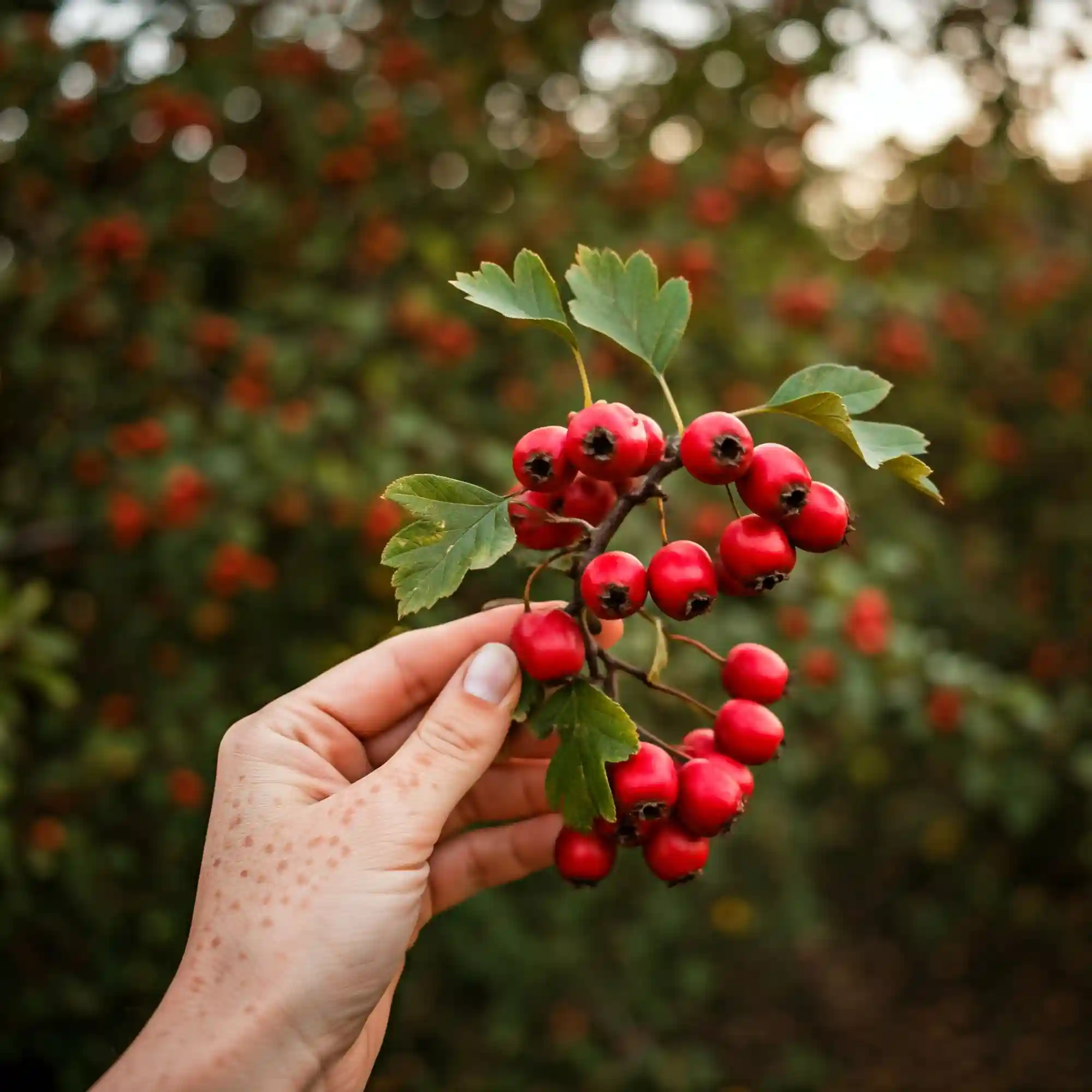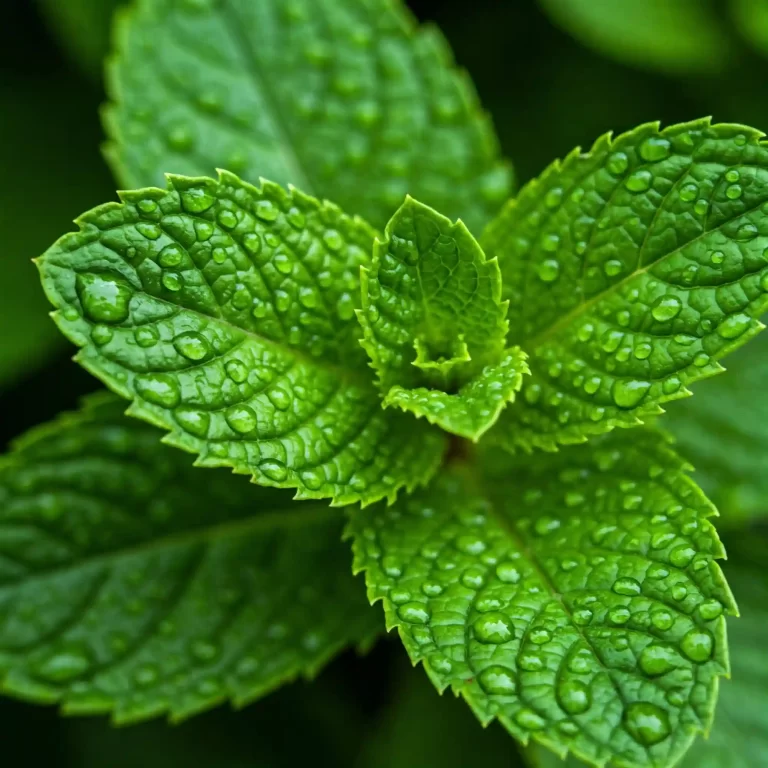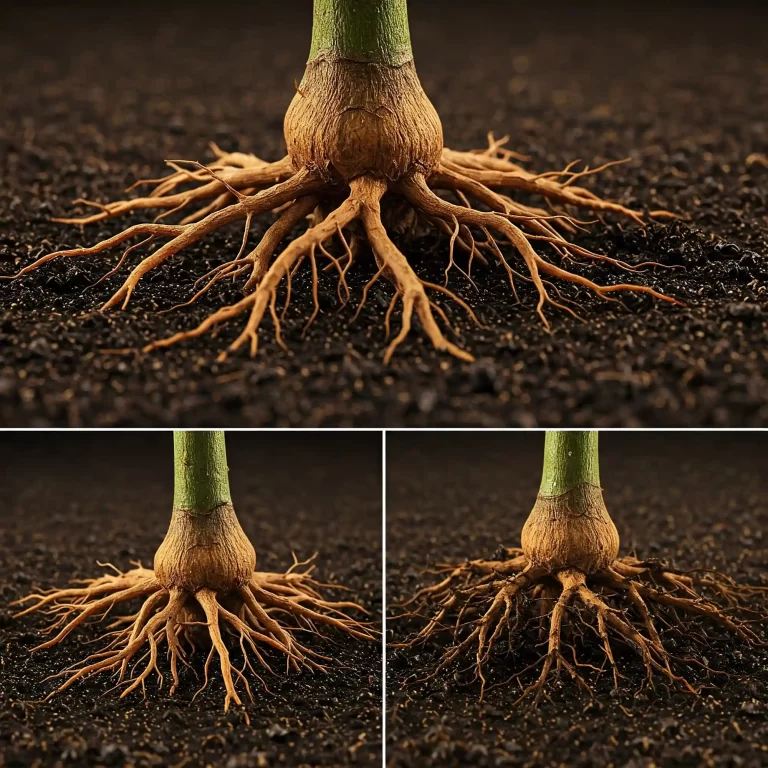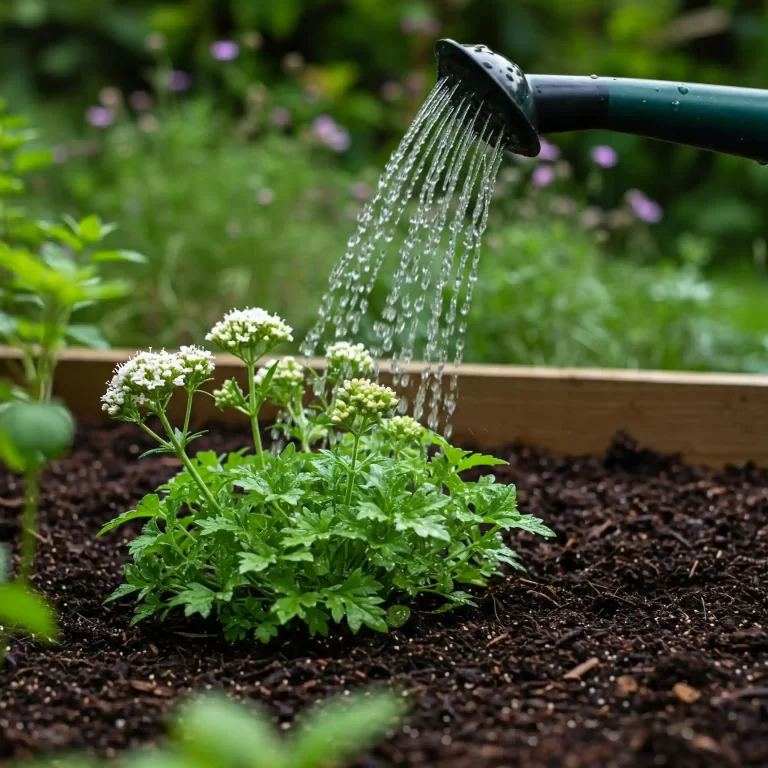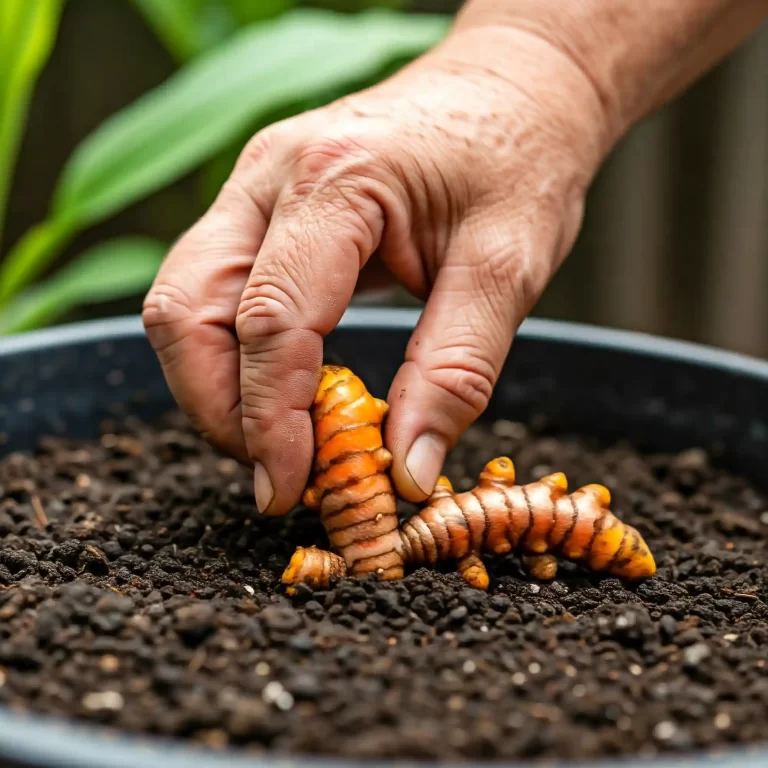Are you looking for a natural way to support your well-being? Perhaps you’re intrigued by the power of herbal remedies and want to cultivate your own supply. Or maybe you’re simply a passionate gardener eager to expand your botanical horizons. I understand the desire to connect with nature and harness its healing potential. I’ve been there myself, searching for natural solutions and finding immense satisfaction in growing my own herbs. If you’re drawn to the idea of growing your own powerful herbal remedy, then growing hawthorn herbs might be just what you’re looking for. This guide offers a comprehensive, step-by-step approach to growing hawthorn herbs, from planting to harvesting, ensuring you can enjoy the benefits of this remarkable plant.
1. Understanding Hawthorn: A Versatile Herbal Treasure
Hawthorn (Crataegus spp.) is a captivating genus of flowering shrubs and small trees belonging to the rose family (Rosaceae). Native to the temperate regions of the Northern Hemisphere, including Europe, Asia, and North America, hawthorn has captured my attention as a gardener and herbalist for its beauty, resilience, and remarkable medicinal properties. You’ll soon discover that it’s a truly versatile plant, offering a wealth of benefits.
What is Hawthorn?
Hawthorn is easily distinguished by its thorny branches (hence the name, derived from the Old English “hægþorn,” meaning “hedge thorn”), lobed leaves, and clusters of small white or pink flowers that bloom in spring. These flowers give way to small, red berries (haws) in the autumn, creating a captivating display of seasonal transformation.
Different Types of Hawthorn
With hundreds of species and hybrids of hawthorn, precise identification can be a challenge. However, some of the most common and widely used species include:
- Crataegus monogyna (Common Hawthorn): This is perhaps the most widespread species in Europe, typically characterized by deeply lobed leaves and single-seeded berries.
- Crataegus laevigata (Midland Hawthorn): This species has less deeply lobed leaves and two-seeded berries and is commonly cultivated for its ornamental value.
- Crataegus viridis (Green Hawthorn): Native to North America, this species is known for its glossy green leaves and bright red berries.
As you embark on your hawthorn-growing journey, you may encounter other varieties. Don’t be overwhelmed by the sheer number; the growing principles are largely the same.
History and Traditional Uses of Hawthorn
Hawthorn has a rich history interwoven with traditional medicine, folklore, and mythology. In ancient Greece, hawthorn was associated with marriage and fertility, while in medieval Europe, it was believed to ward off evil spirits. I find it fascinating how plants are intertwined with human culture and beliefs.
In traditional herbalism, hawthorn has been used for centuries to support cardiovascular health. It was traditionally employed for various ailments, including heart weakness, high blood pressure, and circulatory problems. It’s a testament to the enduring wisdom of traditional herbal practices.
Hawthorn’s Benefits
While I am not a medical professional and cannot provide medical advice, I can share some information about the traditional uses and modern research on hawthorn. It’s essential to consult with a qualified healthcare provider before using any herbal remedy, especially if you have existing health conditions or are taking medications.
- Heart Health: Hawthorn is perhaps best known for its potential benefits for the cardiovascular system. Some studies suggest that it may help improve heart function, blood flow, and blood pressure.
- Blood Pressure: Research indicates that hawthorn may have a mild blood pressure-lowering effect.
- Anxiety Relief: Hawthorn has also been traditionally used to help reduce anxiety and promote relaxation.
Hawthorn in the Garden
Beyond its herbal uses, hawthorn is a valuable addition to any garden. It provides habitat and food for wildlife, including birds and insects. It can be used for hedging, creating a natural boundary or screen. Plus, the spring flowers and autumn berries add visual interest throughout the year.
Hawthorn Berries Nutritional Value (per 100g):
| Nutrient | Amount |
| Calories | 77 |
| Carbohydrates | 18.7g |
| Fiber | 6.8g |
| Vitamin C | 13mg |
| Potassium | 260mg |
Hawthorn Flower Composition:
- Flavonoids (especially oligomeric procyanidins or OPCs)
- Phenolic acids
- Triterpenes
I believe that understanding the background of a plant enriches the gardening experience. By knowing its history, uses, and properties, you develop a deeper connection with the natural world. This understanding makes the process of growing hawthorn herbs all the more rewarding.
2. Choosing the Right Hawthorn Variety for Your Garden
Selecting the appropriate hawthorn variety for your garden is a crucial step in ensuring its successful growth and integration into your landscape. Several factors deserve careful consideration, including your local climate, the desired growth habit of the hawthorn, the specific characteristics of the berries, and the plant’s resistance to diseases.
Considering Your Climate and Hardiness Zone
Hawthorn thrives in temperate climates and exhibits adaptability to a range of conditions. However, it is essential to ascertain the specific hardiness zone in which you reside. Hardiness zones are geographically defined areas with specific temperature ranges that determine the suitability of plants to withstand winter conditions.
Hawthorn prospers within hardiness zones 3 to 7, which encompass regions with varying winter temperatures. If you reside within these zones, you can confidently cultivate hawthorn in your garden. However, if you live outside these zones, you may need to consider alternative plant selections.
Growth Habits: Tree vs. Shrub Forms
Hawthorn exhibits diverse growth habits, ranging from small trees to shrubs. The growth habit you select will depend on your garden’s layout and your aesthetic preferences.
If you envision a hawthorn as a focal point in your garden, a tree form may be ideal. These hawthorns typically possess a single trunk and a well-defined crown, adding a touch of elegance to your landscape.
Alternatively, if you prefer a more informal, naturalistic look, a shrub form may be more suitable. These hawthorns tend to have multiple stems and a more spreading habit, creating a dense, bushy appearance.
Berry Color and Size Variations
Hawthorn berries exhibit a captivating array of colors, ranging from vibrant reds to deep purples. The berry size also varies among species, with some producing small, pea-sized berries, while others bear larger, more substantial fruits.
The berry color and size you select will depend on your personal preferences and the specific purpose for which you intend to use the berries. If you plan to use the berries for culinary purposes, you may opt for larger, more flavorful varieties. Alternatively, if you are primarily interested in the ornamental value of the berries, you may choose varieties with striking colors.
Disease Resistance
Hawthorn, like all plants, is susceptible to certain diseases. However, some varieties exhibit greater resistance to these ailments than others. When selecting a hawthorn variety, it is essential to consider its disease resistance to ensure its long-term health and vigor.
Fireblight, a bacterial disease that can cause significant damage to hawthorn, is a common concern. Opting for varieties with known resistance to fireblight can help prevent this disease from affecting your hawthorn.
By carefully considering these factors, you can select the hawthorn variety that best suits your garden’s conditions and your personal preferences. With the right choice, you can enjoy the beauty and benefits of this versatile plant for years to come.
3. How to Plant Hawthorn Herbs: Seeds, Cuttings, or Saplings?
Establishing your hawthorn herb garden can be achieved through various methods, each with its own set of advantages and considerations. You can choose to start from seeds, propagate from cuttings, or opt for the convenience of transplanting saplings.
Growing Hawthorn from Seed: A Patient Endeavor
Growing hawthorn from seed can be a rewarding experience, allowing you to witness the complete life cycle of this remarkable plant. However, it is essential to be aware that this method requires patience and attention to detail.
Hawthorn seeds possess a thick, hard outer coat that can hinder germination. To overcome this dormancy, a process called stratification is necessary. Stratification involves subjecting the seeds to a period of cold, moist conditions, mimicking the natural winter environment that triggers germination.
To stratify hawthorn seeds, follow these steps:
- Collect ripe hawthorn berries in the fall.
- Remove the pulp from the berries, leaving only the seeds.
- Place the seeds in a container filled with moist sand or peat moss.
- Seal the container in a plastic bag and store it in the refrigerator for 2-4 months.
After the stratification period, you can sow the seeds in a well-prepared seedbed or in individual pots. Ensure the soil is moist and well-draining. Germination may take several weeks or even months, so patience is key.
Propagating Hawthorn from Cuttings: A Faster Approach
Propagating hawthorn from cuttings offers a more rapid method of establishing new plants. This technique involves taking cuttings from healthy, mature hawthorn branches and encouraging them to root.
The best time to take hawthorn cuttings is in the late spring or early summer, when the new growth is still relatively soft. Select healthy, disease-free branches and cut 4-6 inch sections, removing the lower leaves.
Dip the cut ends of the cuttings in rooting hormone to promote root development. Plant the cuttings in a moist rooting medium, such as perlite or vermiculite. Place the cuttings in a shaded area and keep the medium consistently moist.
Within a few weeks, the cuttings should begin to root. Once the roots are established, you can transplant the new hawthorn plants into individual pots or directly into the garden.
Planting Hawthorn Saplings: A Convenient Option
Planting hawthorn saplings is the most straightforward method of establishing a hawthorn herb garden. You can purchase saplings from a local nursery or garden center.
When selecting hawthorn saplings, choose healthy, vigorous plants with well-developed root systems. Avoid plants with signs of disease or damage.
Before planting, prepare the planting site by digging a hole that is twice as wide and just as deep as the root ball of the sapling. Amend the soil with compost or other organic matter to improve drainage and fertility.
Carefully remove the sapling from its container and place it in the planting hole. Backfill the hole with soil, ensuring the top of the root ball is level with the surrounding ground. Water the sapling thoroughly and apply a layer of mulch around the base to help retain moisture and suppress weeds.
With proper care and attention, your hawthorn herbs will thrive, providing you with a bountiful supply of these versatile and beneficial plants.
4. Creating the Ideal Growing Conditions for Hawthorn Herbs
Providing the right growing conditions is essential for the health and productivity of your hawthorn herbs. These adaptable plants can thrive in a range of environments, but understanding their specific needs will ensure their optimal growth.
Sunlight Requirements: Basking in the Sun’s Embrace
Hawthorn herbs flourish in full sun, requiring at least 6 hours of direct sunlight per day. However, they can also tolerate partial shade, especially in hotter climates.
If you live in a region with intense summer heat, providing some afternoon shade can help prevent leaf scorch and ensure the plants remain healthy and vibrant.
Soil Type and pH: A Foundation for Growth
Hawthorn herbs prefer well-draining soil that is slightly acidic to neutral, with a pH range of 6.0 to 7.0. They can tolerate a variety of soil types, including clay, loam, and sandy soils, as long as the drainage is adequate.
To improve soil drainage, you can amend heavy clay soils with compost or other organic matter. This will help prevent waterlogging, which can lead to root rot and other problems.
Watering Needs: A Delicate Balance
Hawthorn herbs require regular watering, especially during their establishment phase. However, it is essential to avoid overwatering, as this can lead to root rot.
Water deeply and infrequently, allowing the soil to dry out slightly between waterings. During periods of drought, you may need to water more frequently.
Fertilizing Hawthorn: Nourishing Growth
Hawthorn herbs are not heavy feeders, but they can benefit from occasional fertilization. Apply a balanced fertilizer in the spring, just as new growth begins to emerge.
Avoid over-fertilizing, as this can lead to excessive vegetative growth at the expense of berry production.
By providing the right growing conditions, you can ensure your hawthorn herbs thrive, providing you with a bountiful supply of these versatile and beneficial plants.
5. How to Care for Your Growing Hawthorn Herbs
Once your hawthorn herbs are established, providing proper care will ensure their continued health and productivity. This involves regular pruning, monitoring for pests and diseases, and applying mulch to protect the roots and conserve moisture.
Pruning Hawthorn: Shaping and Maintaining Health
Pruning is an essential aspect of hawthorn care, helping to maintain the plant’s shape, promote healthy growth, and encourage abundant berry production.
The best time to prune hawthorn is in late winter or early spring, before new growth begins to emerge. Remove any dead, damaged, or crossing branches. You can also prune to shape the plant, creating a more compact or open habit, depending on your preferences.
When pruning, make clean cuts just above a bud or branch junction. Avoid cutting into the main trunk or branches, as this can create entry points for diseases.
Pest and Disease Control: Protecting Your Hawthorn Herbs
Hawthorn herbs are relatively pest and disease-free, but they can occasionally be affected by certain issues. Common pests include aphids, caterpillars, and spider mites. Diseases such as fireblight, leaf spot, and rust can also occur.
To prevent pest and disease problems, it is essential to provide proper growing conditions, including adequate sunlight, well-draining soil, and good air circulation. Regularly inspect your plants for signs of pests or diseases.
If you detect pests, you can try removing them by hand or using a strong spray of water. For more severe infestations, you may need to use insecticidal soap or horticultural oil.
For diseases, remove any affected branches or leaves and dispose of them properly. You can also apply a fungicide if necessary.
Mulching: Conserving Moisture and Suppressing Weeds
Applying a layer of mulch around the base of your hawthorn herbs can provide several benefits. Mulch helps to conserve soil moisture, suppress weeds, and regulate soil temperature.
Use organic mulch, such as wood chips, bark, or straw. Apply a 2-4 inch layer around the base of the plant, keeping the mulch a few inches away from the trunk to prevent rot.
By following these care tips, you can ensure your hawthorn herbs remain healthy, vigorous, and productive for years to come.
6. Harvesting Hawthorn Berries, Flowers, and Leaves
Harvesting hawthorn herbs is a rewarding culmination of your gardening efforts, providing you with a bounty of valuable plant material for culinary and medicinal uses. Knowing when and how to harvest each part of the hawthorn tree will ensure you obtain the highest quality and maximize its benefits.
When to Harvest Hawthorn Berries: A Sign of Autumn’s Arrival
Hawthorn berries typically ripen in the fall, transforming from green to a deep red or crimson hue. The precise timing of the harvest will depend on your local climate and the specific hawthorn variety you are growing.
A good indicator of ripeness is when the berries are plump, slightly soft to the touch, and easily detach from the branches. You can also taste a berry to check for ripeness; ripe berries will have a slightly sweet and tangy flavor.
Harvesting Hawthorn Flowers: A Springtime Delight
Hawthorn flowers bloom in the spring, creating a beautiful display of white or pink blossoms. The best time to harvest the flowers is when they are fully open but still fresh and vibrant.
Harvest the flowers in the morning, after the dew has evaporated. Gently pluck the flowers from the branches, taking care not to damage the plant.
Harvesting Hawthorn Leaves: A Versatile Herb
Hawthorn leaves can be harvested throughout the growing season, but the young, tender leaves are generally preferred for culinary and medicinal uses.
Harvest the leaves in the spring or early summer, when they are still light green and tender. You can harvest individual leaves or clip small sections of the branches.
Proper Harvesting Techniques: Respecting the Plant
When harvesting hawthorn berries, flowers, or leaves, it is essential to use proper techniques to avoid damaging the plant.
Use sharp pruning shears or scissors to make clean cuts. Avoid tearing or ripping the branches, as this can create entry points for diseases.
Harvest only what you need, leaving plenty of berries, flowers, and leaves on the plant to ensure its continued health and to provide food for wildlife.
7. Using Your Hawthorn Herbs: Culinary and Medicinal Applications
Once you’ve harvested your hawthorn bounty, a world of culinary and medicinal possibilities opens up. From soothing teas to delectable jams and potent tinctures, hawthorn offers a versatile range of applications to enhance your well-being and culinary creations.
Making Hawthorn Tea: A Heartwarming Elixir
Hawthorn tea is a gentle and comforting beverage that can be enjoyed daily to support cardiovascular health. To prepare hawthorn tea, follow these simple steps:
- Gently crush a handful of fresh or dried hawthorn berries and flowers.
- Place the crushed herbs in a teapot or mug.
- Pour boiling water over the herbs and let steep for 10-15 minutes.
- Strain the tea and enjoy its delicate floral aroma and subtle sweetness.
Preparing Hawthorn Tinctures and Extracts: Concentrated Herbal Power
Hawthorn tinctures and extracts offer a more concentrated form of the herb’s beneficial compounds. To prepare a hawthorn tincture, follow these steps:
- Fill a glass jar with fresh or dried hawthorn berries, flowers, or leaves.
- Pour a high-proof alcohol, such as vodka or brandy, over the herbs, ensuring they are fully submerged.
- Seal the jar tightly and store it in a cool, dark place for 4-6 weeks, shaking it daily.
- Strain the tincture through a cheesecloth or fine-mesh sieve, discarding the plant material.
- Store the tincture in a dark glass bottle.
Culinary Uses of Hawthorn Berries: A Touch of Tartness
Hawthorn berries can be used to add a unique tartness to a variety of culinary creations. They can be made into jams, jellies, sauces, and even fruit leathers.
To make hawthorn berry jam, follow these steps:
- Combine hawthorn berries, water, and sugar in a saucepan.
- Bring the mixture to a boil, then reduce heat and simmer until the berries are softened.
- Mash the berries and continue to simmer until the jam thickens.
- Pour the jam into sterilized jars and seal.
A Brief Overview of Medicinal Benefits: A Natural Approach to Wellness
Hawthorn has been traditionally used to support various aspects of health, including:
- Heart health: Hawthorn may help improve blood flow, lower blood pressure, and protect against heart disease.
- Anxiety relief: Hawthorn may have calming effects and help reduce anxiety symptoms.
- Digestive health: Hawthorn may aid digestion and relieve bloating.
It’s important to consult with a healthcare professional before using hawthorn for medicinal purposes, especially if you have any underlying health conditions or are taking medications.
8. Growing Hawthorn Herbs in Containers
For those with limited garden space or who prefer the portability of container gardening, growing hawthorn herbs in pots is a viable and rewarding option. Here’s how to cultivate these versatile plants in containers:
Choosing the Right Container
Select a container that is appropriately sized for the hawthorn variety you’re growing. A pot that is too small will restrict the plant’s growth, while one that is too large may retain excess moisture, leading to root rot. Ensure the container has drainage holes to prevent waterlogging.
Potting Mix and Drainage
Use a well-draining potting mix that is specifically formulated for container gardening. Avoid using garden soil, as it can become compacted in pots and impede drainage. To further enhance drainage, you can add a layer of gravel or perlite to the bottom of the container.
Watering and Fertilizing
Container-grown hawthorn herbs will require more frequent watering than those grown in the ground, as the potting mix tends to dry out more quickly. Water thoroughly when the top inch of soil feels dry to the touch, allowing excess water to drain out of the bottom of the pot.
Fertilize your container-grown hawthorn herbs in the spring with a balanced fertilizer diluted to half strength. Avoid over-fertilizing, as this can lead to excessive growth and reduced berry production.
Overwintering Containerized Hawthorn
In colder climates, container-grown hawthorn herbs will need to be overwintered in a protected location, such as an unheated garage or shed. This will prevent the roots from freezing and ensure the plant’s survival through the winter months.
Before overwintering, prune the hawthorn back to a manageable size and remove any dead or diseased branches. Water the plant thoroughly and allow the soil to dry out slightly before moving it to its winter location.
Check the soil moisture periodically throughout the winter and water sparingly if needed. In the spring, once the danger of frost has passed, you can move your hawthorn herb back outdoors and resume regular care.
9. Troubleshooting Common Hawthorn Growing Problems
While hawthorn herbs are generally resilient and easy to care for, they can occasionally encounter certain problems. Being aware of these potential issues and knowing how to address them will ensure your hawthorn herbs remain healthy and productive.
Identifying Common Pests and Diseases
Hawthorn herbs can be susceptible to various pests and diseases, including:
- Aphids: These small, soft-bodied insects feed on plant sap, causing leaves to curl and distort.
- Caterpillars: These voracious larvae can chew on leaves, causing significant damage if left unchecked.
- Spider mites: These tiny mites create webs on leaves and suck plant sap, causing leaves to discolor and drop.
- Fireblight: This bacterial disease causes branches to blacken and die back, giving the plant a scorched appearance.
- Leaf spot: This fungal disease causes dark spots to appear on leaves, which can eventually lead to leaf drop.
- Rust: This fungal disease causes orange or yellow pustules to develop on leaves and stems.
Organic Pest and Disease Control Methods
For those who prefer a natural approach to pest and disease control, several organic methods can be employed:
- Handpicking: For larger pests like caterpillars, handpicking them off the plant can be an effective control method.
- Water spray: A strong spray of water can dislodge aphids and spider mites from leaves.
- Insecticidal soap: This natural soap-based spray can effectively control aphids, spider mites, and other soft-bodied insects.
- Horticultural oil: This oil-based spray can smother pests and prevent them from feeding.
- Neem oil: This natural oil extracted from neem seeds can disrupt insect growth and reproduction.
- Copper fungicide: This natural fungicide can help control leaf spot and rust diseases.
Addressing Nutrient Deficiencies
Nutrient deficiencies can manifest in various ways, such as yellowing leaves, stunted growth, or poor berry production. To address nutrient deficiencies, you can amend the soil with compost or other organic matter. You can also apply a balanced fertilizer in the spring, diluted to half strength.
By being vigilant and proactive in addressing these potential issues, you can ensure your hawthorn herbs remain healthy and thrive in your garden.
10. Enjoying the Rewards of Growing Your Own Hawthorn Herbs
Growing your own hawthorn herbs is a fulfilling endeavor that offers a multitude of rewards. From the satisfaction of nurturing a plant from seed to the health benefits of its berries, flowers, and leaves, hawthorn is a valuable addition to any garden.
The Satisfaction of Growing Your Own Herbs
There’s a unique sense of accomplishment that comes from growing your own herbs. Nurturing a plant from seed or cutting, watching it grow and thrive under your care, and finally harvesting its bounty is a deeply satisfying experience.
Growing your own hawthorn herbs allows you to connect with nature on a deeper level, appreciate the cycles of life, and gain a greater understanding of the natural world.
The Benefits of Having a Readily Available Source of Hawthorn
Having a readily available source of hawthorn herbs means you can enjoy their benefits whenever you need them. Whether you’re brewing a soothing cup of hawthorn tea, preparing a potent hawthorn tincture, or adding a touch of tartness to your culinary creations, you’ll have a fresh and reliable supply at your fingertips.
Growing your own hawthorn herbs also ensures you have access to high-quality, organically grown plant material, free from harmful chemicals and pesticides.
Encouraging Readers to Start Their Own Hawthorn Herb Garden
If you’re considering starting your own hawthorn herb garden, I encourage you to take the plunge. It’s a rewarding experience that will provide you with a wealth of benefits for years to come.
With a little patience, care, and attention, you can successfully grow your own hawthorn herbs and enjoy their beauty, versatility, and health-enhancing properties.
FAQ: Your Hawthorn Growing Questions Answered
This section addresses some frequently asked questions about growing hawthorn herbs.
How to grow hawthorn herbs organically in containers?
Growing hawthorn organically in containers is entirely achievable. Choose a container appropriate for the mature size of your chosen hawthorn variety, ensuring it has drainage holes. Use a high-quality organic potting mix, avoiding garden soil. Position the container in a location that receives at least six hours of sunlight daily. Water when the top inch of soil is dry, and fertilize sparingly in the spring with an organic fertilizer diluted to half strength. Protect containerized plants from harsh winter conditions by moving them to a sheltered location.
How to grow hawthorn herbs from seed for medicinal use?
Growing hawthorn from seed requires patience due to seed dormancy. First, collect ripe berries in the fall and remove the pulp. Stratify the seeds by placing them in moist sand or peat moss in a sealed bag in the refrigerator for 2-4 months. After stratification, sow the seeds in well-draining soil. Germination can take several weeks or even months. Once seedlings are established, transplant them into individual pots and eventually into the garden.
What is the best time to grow hawthorn herbs in zone 6?
In hardiness zone 6, the best time to plant hawthorn saplings is in the spring or fall. Spring planting allows the roots to establish before the heat of summer, while fall planting allows the1 plant to settle in before winter dormancy. If starting from seed, begin the stratification process in the fall for spring sowing.
How to grow hawthorn herbs for making heart-healthy tea?
To grow hawthorn specifically for tea, focus on maximizing flower and berry production. Ensure your plants receive ample sunlight and well-draining soil. Prune lightly after flowering to encourage new growth and berry development. Harvest flowers in the spring when fully open and berries in the fall when ripe. Dry the harvested parts thoroughly before storing them for tea.
How to grow and harvest hawthorn herbs for tinctures?
Growing hawthorn for tinctures involves the same cultivation practices as for other uses. However, when harvesting, you can use berries, flowers, and leaves. For tinctures, it’s best to harvest when the plant parts are at their peak potency. Berries should be fully ripe, flowers freshly opened, and leaves young and vibrant. Follow proper harvesting techniques to avoid damaging the plant.
Can hawthorn grow in shade?
While hawthorn prefers full sun (at least 6 hours daily), it can tolerate partial shade, especially in hotter climates. However, reduced sunlight can lead to less abundant flowering and fruiting.
How big does a hawthorn tree get?
The size of a hawthorn tree varies depending on the species and growing conditions. They typically reach heights of 15-30 feet, with a similar spread.
Is hawthorn poisonous to dogs?
Hawthorn berries are generally considered safe for dogs in small quantities. However, large quantities can cause mild gastrointestinal upset. It’s best to consult with your veterinarian if you have concerns.
How long does it take for a hawthorn tree to bear fruit?
Hawthorn trees typically start producing fruit within 3-5 years of planting, depending on the growing conditions and the method of propagation.
What are the side effects of hawthorn?
While generally safe, hawthorn can interact with certain medications, such as heart medications and blood pressure medications. It’s crucial to consult with a healthcare professional before using hawthorn medicinally, especially if you have any existing health conditions or are taking medications.
This expanded FAQ section addresses many specific questions related to growing and using hawthorn herbs, further enhancing the article’s value and addressing the various nuances of the topic.
Conclusion: Embrace the Journey of Growing Hawthorn Herbs
Growing hawthorn herbs is more than just cultivating a plant; it’s an enriching journey that connects you with nature’s wisdom and provides a wealth of benefits for your well-being. From the delicate beauty of its spring blossoms to the vibrant hues of its autumn berries, hawthorn offers year-round visual interest in your garden.
By following the steps outlined in this guide, you can confidently embark on your own hawthorn-growing adventure. Whether you choose to start from seed, cuttings, or saplings, you’ll be rewarded with a thriving plant that offers a diverse range of uses.
Imagine the satisfaction of harvesting your own hawthorn berries, knowing they’re packed with natural compounds that support heart health and overall wellness. Picture yourself brewing a soothing cup of hawthorn tea, enjoying its delicate flavor and calming aroma.
Growing hawthorn herbs is an investment in your health, your garden, and your connection with the natural world. So why not take the first step today and experience the rewards of cultivating this remarkable plant?
